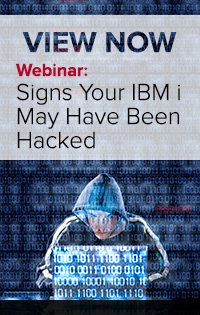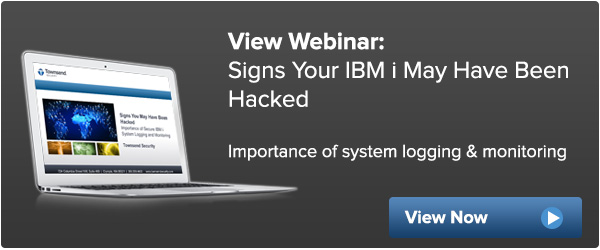Alliance LogAgent is a product designed with the intent of reading your security audit journal event entries, then formatting and forwarding those events to any SIEM or LEM device, but LogAgent provides several significant features and functions that you may not be aware of. In this article I will discuss five of these highly valuable features of the Alliance LogAgent product that you may not know about.
-
 Exclude trusted users to reduce volume. In addition to allowing system administrators to filter out various event types from reporting, Alliance LogAgent will also allow you to filter out all events created by specified user profiles through the use of an “Excluded Users” list. System admins may occasionally find it necessary to filter out all audit events created by implicitly trusted system user profiles. Alliance LogAgent allows you to configure this ability at the IBM i level so that you can block those events from reaching your SIEM, thus reducing the volume of events that the SIEM must filter from reports.
Exclude trusted users to reduce volume. In addition to allowing system administrators to filter out various event types from reporting, Alliance LogAgent will also allow you to filter out all events created by specified user profiles through the use of an “Excluded Users” list. System admins may occasionally find it necessary to filter out all audit events created by implicitly trusted system user profiles. Alliance LogAgent allows you to configure this ability at the IBM i level so that you can block those events from reaching your SIEM, thus reducing the volume of events that the SIEM must filter from reports. - Secure communications between agent and SIEM. While most SIEM solutions provide support for TCP and/or UDP connections to agents, Alliance LogAgent also supports the use of SSL/TLS secure connection for customers who need to protect the privacy of the communications between the agent and the SIEM. With the simple addition of certificates to the IBM i Digital Certificate Manager and configuration of an Application ID tied to the certificate, Alliance LogAgent can be quickly configured to use SSL/TLS communications to protect your communications with the SIEM.
- Exit Point monitoring. In the IBM i environment many IBM applications provide Exit Points that can be used to trigger flags for reporting or launching other processes. Alliance LogAgent has the ability to monitor these Exit Points and create audit events that get reported to the SIEM so that system administrators can use the SIEM to monitor many of those functions. Providing Exit Point monitoring within Alliance LogAgent allows the SIEM to provide administrators with valuable reporting of the use of many of these systems within the IBM i.
- File Integrity Monitoring. File integrity monitoring is recommended under PCI DSS and other regulations. Even in other environments it is often highly desirable to be able to verify and monitor the integrity of data within database files. Alliance LogAgent has an add-on module that provides this highly valuable File Integrity Monitoring (FIM) function. Database Monitor allows the admin to determine which files and which fields within those files need to monitored for access and integrity. Database Monitor will record the original field data and also the new values recorded in the field, as well as application and user information for how and when the data was changed. This integrity monitoring allows you to also set alerts to administrators if unauthorized users, or applications alter data, or if data changes violate configurable thresholds.
- Simplified formatting for event reporting. In the world of event management there are many possible SIEM and LEM systems and services available. Some of these SIEM and LEM systems use Common Event Format (CEF) for handling event data, while others use the Syslog (RFC3164) format. Alliance LogAgent provides configuration options to support either of these two formats and is compatible with a wide range of SIEM and LEM devices and services without any need for additional IBM i support or programming. Simply select a couple of collector and formatting options in the product configuration panels, specify the destination address of the SIEM device, and start the system. You can begin seeing your IBM i audit events at the SIEM in a matter of minutes from initial installation of the product.
With the importance of event monitoring becoming more critical for system administrators, it is important to choose a logging solution that will meet your needs. Alliance LogAgent’s wide range of features, combined with the ease of setup and configuration, allows system administrators great flexibility while still allowing for rapid deployment with nearly zero impact on daily operations.

